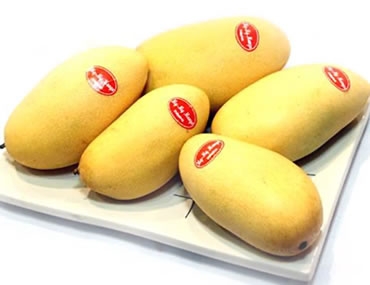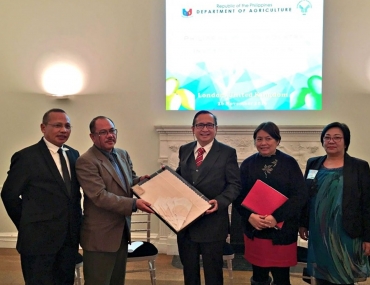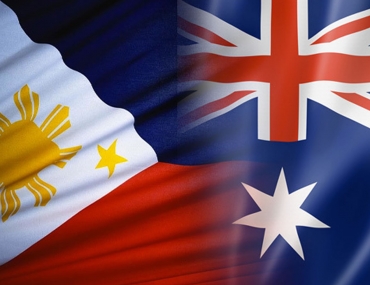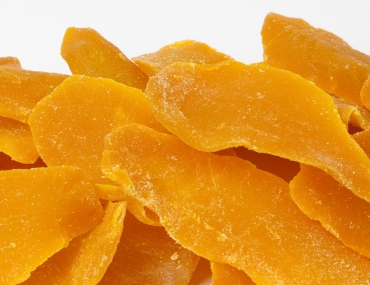
PH signs mango export deal with Australia
- By Super User
- Hits: 2482
MANILA has signed a trade agreement with Canberra for the export of Philippine mango varieties to Australia after the local fruit passed Australia’s strict phytosanitary and quarantine measures.
Agriculture Undersecretary Segfredo Serrano and Australian Ambassador Amanda Gorely signed on October 27, 2016 the amended Specific Commodity Understanding (SCU) for the importation to Australia of fresh mango fruit from the Philippines.
“The signing formalizes Australia’s recognition of the area freedom status of the Philippines from seed weevil and pulp weevil, except for the island of Palawan,” Serrano said.
Mango pulp weevil (MPW) and mango seed weevil (MSW) are pests that attack the pulp and seed of the mango fruit, respectively, rendering it inedible.
The United States government, through the Animal and Plant Health Inspection Service (APHIS), on February 2013 declared the Philippines, with the exemption of Palawan Island, as a Freedom Area for Mango Pulp and Seed Weevil.
This was followed by an SCU for the importation to Australia of fresh mango fruit from the Philippines, which was officially signed at the Philippines Australia Agriculture Forum held in Canberra, Australia on July 9, 2013.
Mangoes from Guimaras and Samal Islands, as well as from Davao del Sur, entered the Australian market on June 8, 2013. Six shipments from June 8 to July 10, 2013 to Melbourne and Adelaide reached a total volume of 4.76 metric tons (MT) with a total value of $14,587.
Agriculture Undersecretary Segfredo Serrano and Australian Ambassador Amanda Gorely signed on October 27, 2016 the amended Specific Commodity Understanding (SCU) for the importation to Australia of fresh mango fruit from the Philippines.
“The signing formalizes Australia’s recognition of the area freedom status of the Philippines from seed weevil and pulp weevil, except for the island of Palawan,” Serrano said.
Mango pulp weevil (MPW) and mango seed weevil (MSW) are pests that attack the pulp and seed of the mango fruit, respectively, rendering it inedible.
The United States government, through the Animal and Plant Health Inspection Service (APHIS), on February 2013 declared the Philippines, with the exemption of Palawan Island, as a Freedom Area for Mango Pulp and Seed Weevil.
This was followed by an SCU for the importation to Australia of fresh mango fruit from the Philippines, which was officially signed at the Philippines Australia Agriculture Forum held in Canberra, Australia on July 9, 2013.
Mangoes from Guimaras and Samal Islands, as well as from Davao del Sur, entered the Australian market on June 8, 2013. Six shipments from June 8 to July 10, 2013 to Melbourne and Adelaide reached a total volume of 4.76 metric tons (MT) with a total value of $14,587.
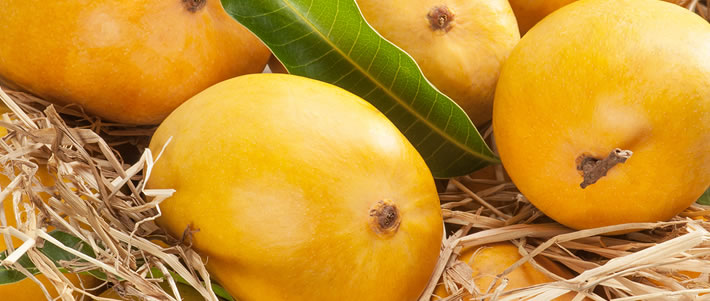
Before being declared MPW and MSW-free
The Bureau of Plant Industry (BPI) conducted a nationwide low monitoring survey for MPW and MSW in different areas in Luzon, the Visayas and Mindanao.
The survey was done in 15 regions and 50 mango-growing provinces. Six regions and 20 provinces were surveyed in Luzon, three regions and 10 provinces in the Visayas, and six regions and 20 provinces in Mindanao.
BPI’s Plant Quarantine Services are closely monitoring several areas nationwide based on their proximity to weevil-infested areas and the intensity of movement of agricultural commodities and sea and air travelers.
These areas include Batangas, Quezon, Oriental Mindoro, Occidental Mindoro, Northern Palawan, Aklan, Antique, Guimaras, Iloilo, Negros Occidental, Cebu, Zamboanga City, Zamboanga Sibugay, Zamboanga del Sur, Zamboanga del Norte, Misamis Oriental, North Cotabato, SOCCSKSARGEN (comprising the provinces of South Cotabato, Cotabato, Sultan Kudarat and Sarangani as well as General Santos City), Maguindanao, Basilan, Sulu and Tawi-Tawi.
Due to BPI’s commitment to the eradication of the said pests, out of 104,155 trees and 1,040,100 fruits targeted for sampling and collection, a total of 101,971 trees were sampled and 1,009,123 fruits were collected and dissected, resulting in a 96.85 percent accomplishment for trees and 96.89 percent accomplishment for fruits for the year 2013.
The survey was done in 15 regions and 50 mango-growing provinces. Six regions and 20 provinces were surveyed in Luzon, three regions and 10 provinces in the Visayas, and six regions and 20 provinces in Mindanao.
BPI’s Plant Quarantine Services are closely monitoring several areas nationwide based on their proximity to weevil-infested areas and the intensity of movement of agricultural commodities and sea and air travelers.
These areas include Batangas, Quezon, Oriental Mindoro, Occidental Mindoro, Northern Palawan, Aklan, Antique, Guimaras, Iloilo, Negros Occidental, Cebu, Zamboanga City, Zamboanga Sibugay, Zamboanga del Sur, Zamboanga del Norte, Misamis Oriental, North Cotabato, SOCCSKSARGEN (comprising the provinces of South Cotabato, Cotabato, Sultan Kudarat and Sarangani as well as General Santos City), Maguindanao, Basilan, Sulu and Tawi-Tawi.
Due to BPI’s commitment to the eradication of the said pests, out of 104,155 trees and 1,040,100 fruits targeted for sampling and collection, a total of 101,971 trees were sampled and 1,009,123 fruits were collected and dissected, resulting in a 96.85 percent accomplishment for trees and 96.89 percent accomplishment for fruits for the year 2013.

